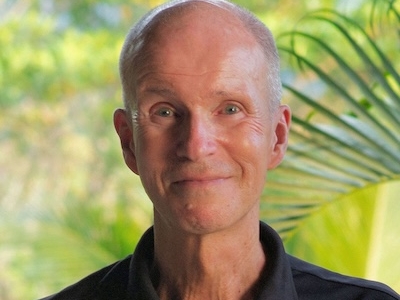 By Don McRae.
By Don McRae.
As I mentioned in “Four Trends in the Creation & Shutdown of Registered Charities in Canada in 2023,” the number of private foundations in Canada continues to grow, while the number of public foundations continues to fall. As of early 2024, there were 6,770 private foundations registered as charities, compared to 6,102 in 2021. Meanwhile, the number of public foundations decreased to 4,780, as of early 2024, down from 4,944 in 2021. In fact, as shown on Tables C and F (below), the decline in public foundations and increase in private foundations have been occurring for some time. To find out more, I took a closer look at 10 years of data about registrations and revocations of public and private foundations, data from the Canada Gazette and T3010 tax forms. (See our “Charity Trends and Revocations” series for other articles and insights.)
Ten Years of Public Foundations Closing Down

Click photo for Don McRae’s “Four Trends in the Creation & Shutdown of Registered Charities in Canada in 2023.”
Public Foundations are falling out of favour as a method of helping Canadians build our society. The numbers show it, and they demonstrate that this has been happening for some time. And there were surprises in what I found. While I expected most foundations to be under the Community Benefit heading (hereafter referred to as Community), I didn’t expect the percentage to be so high: 86.7% of public foundations are registered under Community (see Table A).
Also, you’ll notice in Table A (below) that the number of public foundations (registered as charities) took a dip at the start of the pandemic. Registrations started to increase in 2021 and 2022, but they took a real dip, to 38, in 2023. (Note, I actually looked at additional data, back to 2007, and the 38 registrations in 2023 is still the lowest number of registrations in the past 17 years.)
Table A: Registrations of Public Foundations from 2014 to 2023
| Religion | Poverty | Community | Education | Total | |
| 2023 | 0 | 0 | 36 | 2 | 38 |
| 2022 | 3 | 4 | 63 | 1 | 71 |
| 2021 | 3 | 1 | 48 | 9 | 61 |
| 2020 | 2 | 1 | 49 | 5 | 57 |
| 2019 | 1 | 3 | 84 | 2 | 90 |
| 2018 | 7 | 1 | 68 | 9 | 85 |
| 2017 | 4 | 1 | 71 | 2 | 78 |
| 2016 | 4 | 0 | 64 | 7 | 75 |
| 2015 | 1 | 1 | 70 | 9 | 81 |
| 2014 | 5 | 3 | 63 | 4 | 75 |
| Total | 30 | 15 | 616 | 50 | 711 |
| %age | 4.2% | 2.1% | 86.7% | 7.0% | 100.0% |
Correspondingly, 78.5% of revoked public foundations are under Community (see Table B, below); the major charitable category revoked was “Community benefit – foundations,” with 94 charities in 2023 and 84 charities in 2022. And 13.5% of revocations were for Education charities.
Table B: Revocations of Public Foundations from 2014 to 2023
| Religion | Poverty | Community | Education | Total | |
| 2023 | 9 | 1 | 105 | 14 | 129 |
| 2022 | 5 | 3 | 92 | 19 | 119 |
| 2021 | 6 | 2 | 84 | 17 | 109 |
| 2020 | 6 | 0 | 50 | 11 | 67 |
| 2019 | 7 | 3 | 117 | 18 | 145 |
| 2018 | 7 | 2 | 88 | 21 | 118 |
| 2017 | 4 | 0 | 87 | 11 | 102 |
| 2016 | 5 | 5 | 74 | 11 | 95 |
| 2015 | 10 | 1 | 83 | 16 | 110 |
| 2014 | 7 | 5 | 88 | 11 | 111 |
| Total | 66 | 22 | 868 | 149 | 1,105 |
| %age | 6.0% | 2.0% | 78.5% | 13.5% | 100.0% |
And as shown on Table C (below), there have been 711 registrations and 1,105 revocations for a net loss of 394 public foundations in the last ten years. In fact, 2012 is the last time that there were more public foundation registrations than revocations. So, the decline has been occurring for some time.
Table C: Public Foundation Revocations Over Registrations from 2014 to 2023
| Revocations | Registrations | Variance | |
| 2023 | 129 | 38 | -91 |
| 2022 | 119 | 71 | -48 |
| 2021 | 109 | 61 | -48 |
| 2020 | 67 | 57 | -10 |
| 2019 | 145 | 90 | -55 |
| 2018 | 118 | 85 | -33 |
| 2017 | 102 | 78 | -24 |
| 2016 | 95 | 75 | -20 |
| 2015 | 110 | 81 | -29 |
| 2014 | 111 | 75 | -36 |
| Total | 1,105 | 711 | -394 |
It’s unclear why public foundations have fallen out of favour. It could be that it takes more organization and collaboration to create a public foundation. Maybe Canadians aren’t supporting these groups to the level they were before. (United Ways have certainly found that out in terms of revenue.) It could be that governments and other funders have changed their priorities.
The Past 10 Years of Private Foundations Growing
New private foundations (65.9% of them) are registered mainly under the heading of Community, with Religion taking second place, at 16.8% (see Table D, below). There was a small dip in the number of registrations in 2020, probably due to the pandemic, but new registrations more than recovered in 2021 and onward.
Table D: Registrations of Private Foundations from 2014 to 2023
| Religion | Poverty | Community | Education | Total | |
| 2023 | 84 | 50 | 198 | 35 | 367 |
| 2022 | 68 | 36 | 208 | 22 | 334 |
| 2021 | 77 | 41 | 201 | 41 | 360 |
| 2020 | 38 | 20 | 156 | 25 | 239 |
| 2019 | 41 | 13 | 192 | 25 | 271 |
| 2018 | 27 | 14 | 145 | 20 | 206 |
| 2017 | 36 | 9 | 179 | 21 | 245 |
| 2016 | 22 | 11 | 121 | 11 | 165 |
| 2015 | 13 | 7 | 147 | 19 | 186 |
| 2014 | 18 | 8 | 112 | 8 | 146 |
| Total | 424 | 209 | 1,659 | 227 | 2,519 |
| %age | 16.8% | 8.3% | 65.9% | 9.0% | 100.0% |
In Table E (below), you can see that Community private foundations make up 68.3% of revocations, with Education coming in second, at 17.6%.
Table E: Revocations of Private Foundations from 2014 to 2023
| Religion | Poverty | Community | Education | Total | |
| 2023 | 16 | 1 | 93 | 22 | 132 |
| 2022 | 20 | 3 | 101 | 20 | 144 |
| 2021 | 12 | 2 | 89 | 21 | 124 |
| 2020 | 12 | 0 | 60 | 28 | 100 |
| 2019 | 11 | 3 | 103 | 22 | 139 |
| 2018 | 16 | 2 | 89 | 26 | 133 |
| 2017 | 12 | 0 | 56 | 16 | 84 |
| 2016 | 13 | 5 | 66 | 21 | 105 |
| 2015 | 14 | 1 | 77 | 18 | 110 |
| 2014 | 20 | 4 | 75 | 14 | 113 |
| Total | 146 | 21 | 809 | 208 | 1,184 |
| %age | 12.3% | 1.8% | 68.3% | 17.6% | 100.0% |
As seen in Table F, below, registrations outnumber revocations of private foundations. There were 2,519 private foundations registered in the ten years from 2023 to 2014. Conversely, there were 1,184 revocations. That’s a net gain of 1,335 private foundations in the past decade. What’s striking is that registrations outnumbered revocations in all ten years (and of note, registrations outnumbered revocations all the way back to 2007).
Table F: Private Foundation Registrations vs. Revocations (2014-2023)
| Registrations | Revocations | Variance | |
| 2023 | 367 | 132 | 235 |
| 2022 | 334 | 144 | 190 |
| 2021 | 360 | 124 | 236 |
| 2020 | 239 | 100 | 139 |
| 2019 | 271 | 139 | 132 |
| 2018 | 206 | 133 | 73 |
| 2017 | 245 | 84 | 161 |
| 2016 | 165 | 105 | 60 |
| 2015 | 186 | 110 | 76 |
| 2014 | 146 | 113 | 33 |
| Total | 2,519 | 1,184 | 1,335 |
Why All This Matters: A Major Shift in Canada?

Illustration: “Of Pride,” in John Day’s “A Christall Glasse of Christian Reformation,” London, 1569.
I, for one, am concerned that there are fewer public foundations than before, because the trend suggests that our common understanding of charity is changing from a public duty to private effort and, frankly, moving toward a more Statute of Elizabeth I interpretation of how our society takes care of others. In other words, what we view as worthwhile charitable causes or acts is becoming more privatized, more limited and perhaps more about the rich giving to the “needy” (there are still Canadian charities that use that term).
When you consider the number of closed charities, including shuttered public foundations, you have a picture of a loss of a number of community organizations in all parts of Canada — in cities, towns and villages across all provinces and territories — encompassing every major activity that charities undertake.
The increase in private foundations may reflect the current distribution of wealth in Canadian society and the increasing gap between those who have and those who don’t – or more precisely, between those who have a lot and those who deserve a whole lot more. However, the increase in the number of private foundations might also suggest that our society may be increasingly viewing monied individuals’ or families’ predilections of charity in a more favourable light than collective or community responses. If so, we’re poorer for it.
Don McRae is an old, left-handed, male, Scottish agnostic with Wesleyan-Methodist grandparents (hence the agnosticism). He’s also a former federal public servant and a longstanding volunteer, consultant, writer and researcher on the charitable sector. For more than ten years, McRae has studied trends in the charitable sector by analyzing the revocations of charitable status that are published in the Canada Gazette. He digs deeper into trends by examining data from annual charity tax returns (T3010 forms) at the end of the calendar year, and looks at newly registered charities to see what replaces the revoked ones. McRae can be found on LinkedIn.
Photo is courtesy of Janko Ferlic.
Sign up for MPNL’s free newsletter, PANL Perspectives.
Tuesday, April 9, 2024 in Data Discoveries, Don McRae, For homepage, News & Events, Private Foundations, Trends
Share: Twitter, Facebook



